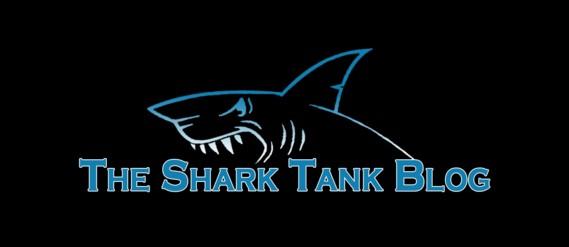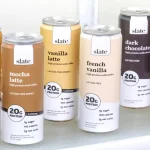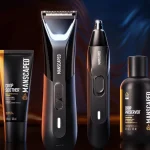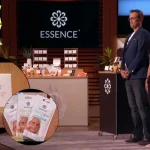
Caption: Biggest Shark Tank Failures
Highlights
- Bombas and Scrub Daddy are the biggest examples of success on Shark Tank.
- Sweet Ballz received favorable response from all the judges, but failed after a legal battle between its entrepreneurs.
- After securing a deal on the show, CateApp shut down within a year of its appearance.
The entrepreneurial space is filled with uncertainties. Ambiguous business goals, inability to meet user requirements, arguments with investors, and legal complications can result in failures. Multiple Shark Tank products, which bagged great deals on the show but failed in the real world, have shown this.
There is no doubt that the entrepreneurial show boasts global successes such as Scrub Daddy and Bombas. However, there is a different side to the show, which reflects an opposite story. Here are some Shark Tank products that failed after the show:
1. ToyGaroo
ToyGaroo was a rental service for toys brought to the Sharks by Nikki Pope. She sought $100K for 10% equity in the company. She pitched the business along with her husband. The two of them revealed to be owning only 10% of the business; the remaining 90% belonged to other partners.
Which Shark Invested In ToyGaroo?
Despite initial apprehensions, Kevin O’Leary proposed $100K for 35% equity. After this, Mark Cuban and Robert Herjavec offered $200K for 40% equity together. Kevin then asked Mark if he would join him. Ultimately, Mark Cuban and Kevin O’Leary sealed the deal at $200K for 40% equity.
How Was ToyGaroo A Failure?
Right after its appearance on the show, ToyGaroo received huge orders. However, owing to its low stock of toys, the business could not complete the orders on time. Additionally, it kept on increasing the costs of shipping, which made the business expensive for users.
As a result, ToyGaroo shut down within a year of its episode telecast. The biggest reason for this was an inconsistent business model due to multiple visions held by the different partners and investors. With no coherent strategy, the company went bankrupt, and the investors did not earn anything out of it.
2. Sweet Ballz
Baker-entrepreneur James McDonald and Cole Egger went to the judges seeking $250K for 10% equity. The business, ‘Sweet Ballz,’ offered cake balls and had already made $700 in sales by 2013. The products were all made by James and had found their presence in more than 5,000 outlets.
Which Shark Invested In Sweet Ballz?
All six investors seemed impressed, and two groups were formed. Offering $250K for 30% equity, Lori Greiner, along with Kevin O’Leary and Robert Herjavec tried to seal the deal. Whereas, Mark Cuban together with Barbara Corcoran proposed the same amount for 25% equity. James and Cole accepted the second deal.
How Was Sweet Ballz A Failure?
Right after their Shark Tank appearance, the two entrepreneurs engaged in a severe war, which took them to court. James blamed Cole for snatching his online customer base with a similar business named Cake Ballz. After the legal battle, Sweet Ballz suffered badly, and the Sharks’ investment could not yield anything.
3. Breathometer
Entrepreneur Charles Michael Yim approached the judges with his smartphone breathalyzer. The investment sought in Breathometer was $250K for 10% equity. Presenting it as an ideal device that could save lives, he tried to convince the Sharks with its unique alcohol detection features.
Which Shark Invested In Breathometer?
Each of the Sharks showed their interest in investing. After an intense round of negotiations, all of them joined hands to offer the final deal at $1 million for 30% equity. Charles then offered the Lion’s share to Mark Cuban, who invested the most with $500K for 15% equity. The others offered the remaining $500 for 15%.
How Was Breathometer A Failure?
Breathometer ranks high in the list of failed Shark Tank products for many reasons. Firstly, in 2017, it was found that the device gave forged readings, which received harsh actions from the Federal Trade Commission. Secondly, Mark claimed that the entrepreneur wasted all his money traveling. As of 2023, there was no update on the products’ availability.
4. CateApp
Policeman turned entrepreneur Neal Desai approached the panelists seeking $50K for 5% equity. His inventive business idea offered users the unique feature of hiding messages (both voice and text) on their smartphones. By the time he appeared in 2013, the business already had 5,500 subscribers.
Which Shark Invested In CateApp?
Mark Cuban and Robert Herjavec stepped out of the deal, citing its lack of morality. The first offer was by Barbara Cocoran for $50K at 25% equity. Daymond John and Kevin O’Leary together made the next offer at $70K for 35% equity. In the end, Neal went ahead with Kevin and Daymond’s offer.
How Was CateApp A Failure?
CateApp is among the Shark Tank products that failed after their appearance on the show because it went down within a year. Initially, it did witness the ‘Shark Tank effect’ and got many downloads. But soon, frequent app bugs, information leakage, and an inability to compete with similar businesses led to its failure.
To Conclude
Shark Tank has managed to fulfill the aspirations of countless business owners. At the same time, there are certain Shark Tank products, which, even though secured deals, failed in the long haul. ToyGaroo, Breathometer, CateApp, and Sweet Ballz have shown the struggles that entrepreneurs face after the show.
These examples highlight that internal conflicts, improper management, technical lapses, and legal complications can result in failures regardless of a great business vision or huge investment.















